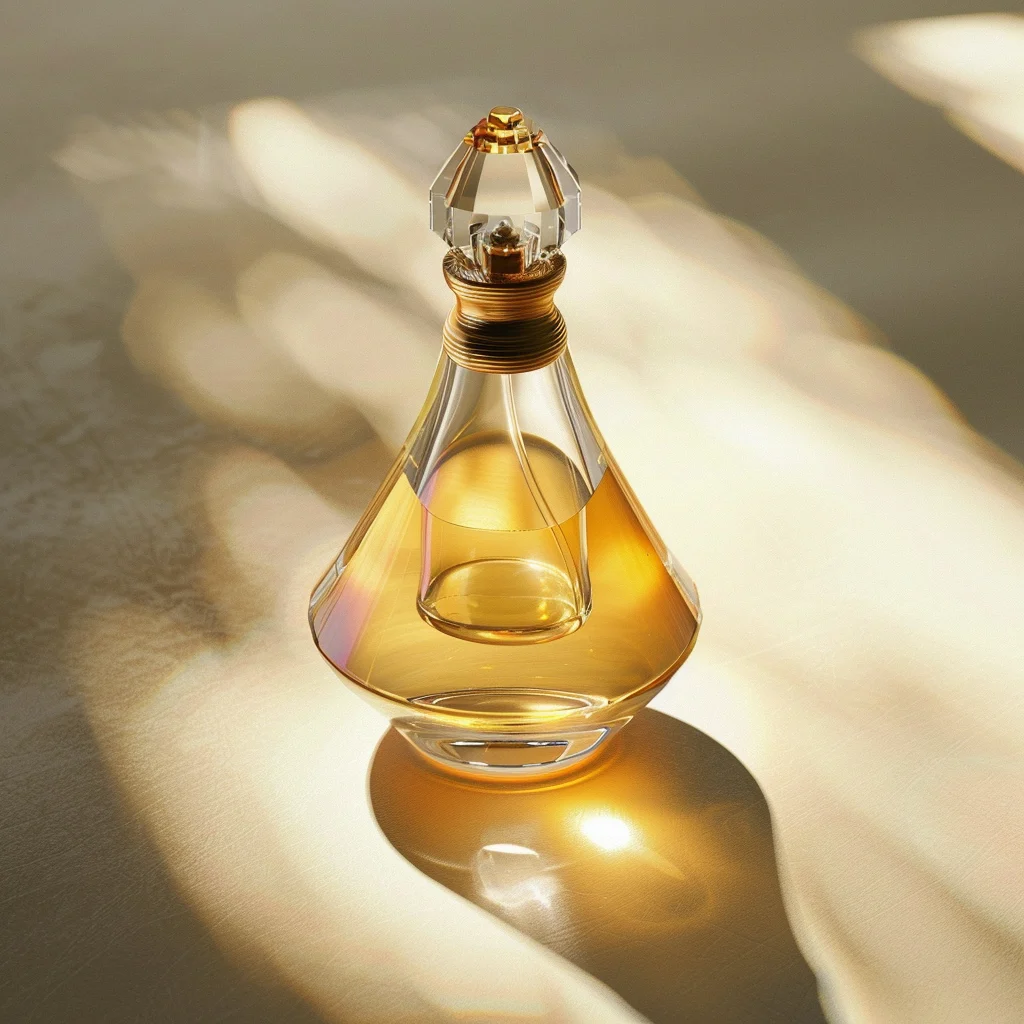What are the different types of glass for perfume bottles ?
- Soda lime glass
Perfume bottles made of soda lime glass consist of sand (silica), soda ash and limestone. This is the most inexpensive type of glass which is clear, durable, but breakable. It is mostly used for perfume bottles and packaging for food.


- Borosilicate glass
This type of glass is made up of sand (silica) and boron trioxide. Borosilicate glass can be very thin which mades it ideal for test tubes and small perfume bottle vials. People often use borosilicate glass for laboratory glass and pyrex cookware.
- Crystal glass (lead or lead free)
We make crystal glass from silica (sand) and lead oxide (or barium or zinc for lead free alternatives). This type of glass has a higher refractive index which means that light can travel and bend more within it. This makes the glass appear more beautiful.
- Opal Glass
Opal glass is soda lime glass with added fluorides or phosphates. It has an opaque or translucent milky white look and cosmetics products often use this type of glass.
How do I judge the quality of glass?
For soda lime or flint glass bottles there are several ways to judge the quality of a bottle:
- The colour of the glass should be highly transparent, not green or grey
- There should be no air bubbles in the glass
- The surface of the glass should be smooth without bumps or scratches
- The distribution of the glass on the base of the bottle should be even, not like a ski slope!
- The walls of the glass should have even distribution, not wobbly walls with uneven thickness
- You should always check that the weight and volume of a glass bottle is consistent across the production moulds used
Which perfume bottle shapes are more difficult to manufacture
Generally speaking, cylinder and curved edge bottles are easier to manufacture. Also bottles which are not so heavy, as heavy bottomed bottles bring extra manufacturing problems. When there are detailed patterns on bottles we can experience problems with manufacture. Additionally, bottles with very sharp 90 degree edges are also more difficult to manufacture.


What is a normal order quantity for a perfume bottle?
We base a production run of glass on the total amount of glass available to dispense. Therefore if a bottle is a lower weight and volume, the minimum production run will be higher. For heavy weight bottles the minimum production run can be only ten or twenty thousand pieces. But a thirty millilitre bottle will generally have a minimum order quantity of fifty thousand pieces.
How to ensure consistent weight and size of perfume bottles
When we manufacture perfumes we use multiple production moulds. There may be ten or twenty replica moulds available. This is to speed up production and to avoid wearing out one mould too quickly. Each mould will have a number on them which will appear on the base of the glass. Because of this, you can see which mould the manufacturer produced the glass bottle from. It is important to inspect bottles from all of the moulds – to gather samples from all numbers of mould. If you do this, then you can check the weight and dimensions of the production and calculate all variations. Small variations can affect the way parts such as spray pumps and caps fit on the bottle. Some moulds may get worn out and need polishing or replacement. You need to know which number mould is the problem.
Why is the production of glass so long?
Glass production is not an easy process. A typical factory will manufacture many different weights of glass and must schedule the production according to weight. Sometimes you may be unlucky, as the weight that you need for your bottle is not so common. If this is the case, it can take time to get the glass weight you need again.
What is better - Europe, Indian or Chinese glass?
Europe undoubtedly has the most advanced technology for perfume glass and can achieve glass with smooth surface finish and even distribution of glass on the base. Piramal glass in India can also achieve a high quality glass, but at a lower price than Europe. However, they are more limited on special shapes and textures and are not able to make the same complexity of design as Europe. China factories have a wide range of quality, some can achieve close to the same level as Europe. There is an added advantage in China that some suppliers may also polish bottles by hand. This gives a crystal glass appearance to the glass which is very appealing. This would be prohibitively expensive to do in Europe.
What are the pros and cons of buying perfume bottles from different locations?.
- Indian glass from Piramal is good quality and a good price
- Piramal cannot make such complex designs as Europer or some China factories
- The lead-time is long from Piramal nowadays, particularly since they were taken over by the Blackstone Group
- China glass can be high quality and clarity from some suppliers
- The price is generally good compared to Europe glass
- Mould fees are much lower than in Europe
- Hand polishing and engraving is available at a lower price
- Technical expertise is higher in Europe
- The cost per item is much higher
- The cost of each new mould is high
- Minimum production runs are higher also


Perfume bottle decoration options
There are many ways to decorate a perfume bottle:
Lacquer – lacquer can be matte, shiny, transparent or opaque, pearl or metallic
Cover with fabric or other material. Brands such as John Varvatos have decorated bottles beautifully with this method
Screen printing – this can be a very effective way to decorate, but it it works better for bigger elements which do not need fine lines or multiple colours
Hot foil can be applied to a bottle to give a luxurious metallic decoration.
Decal decoration – this is a complex design which factories apply to ceramic plates. They apply special inks and colours to transfer paper. The bottle goes into a furnace to set the inks afterwards.
Water transfer – a pattern is applied on top of water, then we dip the perfume bottle into the water. The pattern will appear randomly on the bottle, it cannot be exactly the same each time with this process.
Frosting – is basically the application of acid on the bottle to give a matte effect.
Nowadays suppliers can achieve much more sophisticated decoration. However, the level of decoration will depend on the equipment at the supplier’s factory. In China not many factories can apply hot foil decoration on a curved surface and very few have access to pad printing. Pad printing allows ink printing on the bottle when the surface is uneven.
How do I know if the glass price is fair?
At the end of the day, deciding if a bottle price is fair will depend a lot on trust. Trust that the supplier has the right quality control in place, that they appear to care about your business, that they have a good industry reputation.
The price you pay will depend on the bottle weight and the complexity of the design. It will also depend on the quantity of bottles that you buy. But prices of bottles will vary a lot, even within China. It pays to ask mundane questions about the quality control of the bottles and how the temperature is controlled in the furnace. One factory may reject bottles which another will consider within the acceptable quality range. Knowing the rejection rate and quality standards of the factory may give an indication as to why the price is higher.
To learn more about the process of manufacturing perfume bottles, please visit Stoezle glass. Here you will learn what happens to the molten glass
Anisha International has been working with perfume bottle factories for the past twenty years. We have visited many factories and know their strengths and weaknesses. If you need to develop a new glass bottle project please contact our team to get the best advice.
To learn the full process of designing a bottle through to selling it, check out our Ultimate Perfume creation Guide.

